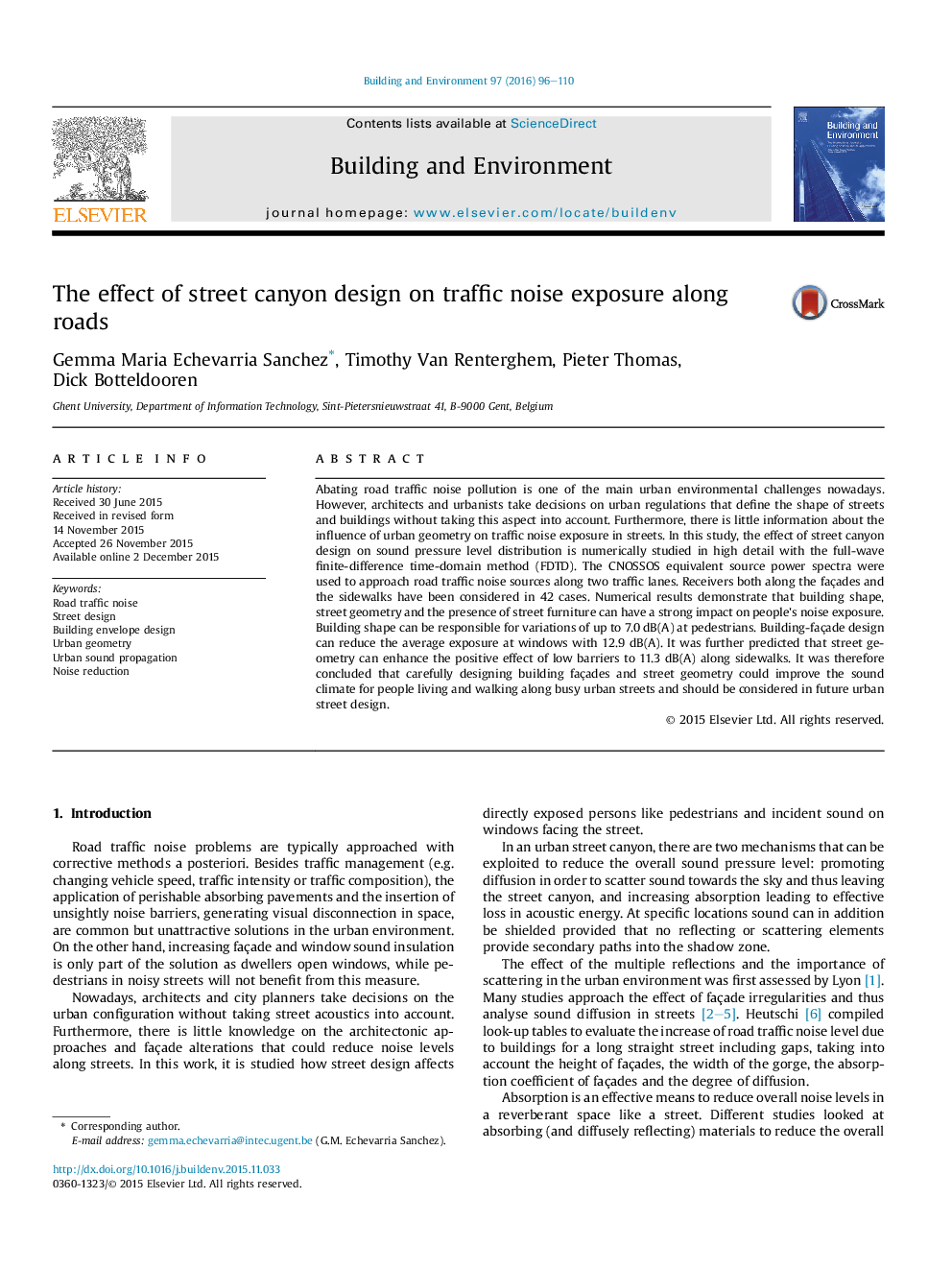| Article ID | Journal | Published Year | Pages | File Type |
|---|---|---|---|---|
| 6699587 | Building and Environment | 2016 | 15 Pages |
Abstract
Abating road traffic noise pollution is one of the main urban environmental challenges nowadays. However, architects and urbanists take decisions on urban regulations that define the shape of streets and buildings without taking this aspect into account. Furthermore, there is little information about the influence of urban geometry on traffic noise exposure in streets. In this study, the effect of street canyon design on sound pressure level distribution is numerically studied in high detail with the full-wave finite-difference time-domain method (FDTD). The CNOSSOS equivalent source power spectra were used to approach road traffic noise sources along two traffic lanes. Receivers both along the façades and the sidewalks have been considered in 42 cases. Numerical results demonstrate that building shape, street geometry and the presence of street furniture can have a strong impact on people's noise exposure. Building shape can be responsible for variations of up to 7.0Â dB(A) at pedestrians. Building-façade design can reduce the average exposure at windows with 12.9Â dB(A). It was further predicted that street geometry can enhance the positive effect of low barriers to 11.3Â dB(A) along sidewalks. It was therefore concluded that carefully designing building façades and street geometry could improve the sound climate for people living and walking along busy urban streets and should be considered in future urban street design.
Related Topics
Physical Sciences and Engineering
Energy
Renewable Energy, Sustainability and the Environment
Authors
Gemma Maria Echevarria Sanchez, Timothy Van Renterghem, Pieter Thomas, Dick Botteldooren,
